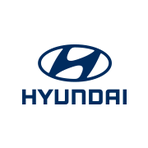The Price Surge: Automakers Adjust to Rising Costs
March 20, 2025, 4:27 pm
In the world of automobiles, price hikes are becoming the new normal. Renault India and BMW Group India recently announced increases in their vehicle prices, reflecting a broader trend across the industry. This shift is not just a blip on the radar; it’s a signal of changing times.
Renault India plans to raise prices by up to 2% starting in April. This decision comes after a prolonged period of absorbing rising input costs. The company has been a bulwark against inflation, but the tide has turned. Now, it must pass some of that burden onto consumers. The price increase will vary across different models and variants, a strategy that allows Renault to remain competitive while adjusting to economic realities.
This isn’t an isolated case. BMW Group India is also stepping into the fray, announcing a price hike of up to 3% for its BMW and MINI models. This marks the second increase in just a few months. The first came in January, and now, as April approaches, customers will feel the pinch again. The automaker is responding to the same pressures that have affected Renault: escalating input costs that have become untenable.
These announcements are part of a larger narrative. Major players in the automotive sector, including Maruti Suzuki, Hyundai, Tata Motors, Kia India, and Honda Cars, are all following suit. They too are raising prices, citing similar reasons. The ripple effect is clear. As one company adjusts its prices, others must follow to maintain their margins.
The automotive industry is a complex ecosystem. It thrives on innovation and competition. Yet, it is also vulnerable to external pressures. Rising raw material costs, supply chain disruptions, and inflation are all factors that can squeeze profit margins. Automakers have tried to shield consumers from these pressures for as long as possible. However, the reality is that they can only absorb costs for so long before adjustments become necessary.
For consumers, this means a tough choice. As prices rise, the dream of owning a new car becomes more expensive. Buyers may need to reconsider their budgets or delay purchases. The market is shifting, and those who once felt secure in their choices may now find themselves at a crossroads.
The price hikes also raise questions about the future of the automotive market. Will consumers continue to buy new cars at these elevated prices? Or will they turn to used vehicles, where prices may be more stable? The answer is not clear. However, one thing is certain: the landscape is changing.
Automakers are not just reacting to current conditions; they are also planning for the future. The push for electric vehicles (EVs) is gaining momentum. As governments around the world set ambitious targets for EV adoption, manufacturers are investing heavily in new technologies. This shift could lead to further price adjustments down the line. The cost of producing EVs is still high, and as companies transition, consumers may see fluctuating prices.
In this environment, brand loyalty will be tested. Consumers who have long favored a particular automaker may find themselves exploring alternatives. If one brand raises prices significantly while another remains competitive, the choice becomes easier. The market is fluid, and loyalty can quickly shift.
The automotive industry is a reflection of broader economic trends. As inflation rises and input costs increase, consumers will feel the impact. The price hikes from Renault and BMW are just the tip of the iceberg. They signal a larger shift in the market that could redefine consumer behavior.
In conclusion, the recent price hikes by Renault India and BMW Group India are emblematic of a larger trend in the automotive industry. As input costs continue to rise, automakers are forced to make tough decisions. Consumers will need to adapt to this new reality, weighing their options carefully. The road ahead may be bumpy, but it is also filled with opportunities for those willing to navigate the changing landscape. The automotive world is in flux, and only time will tell how these shifts will play out.
Renault India plans to raise prices by up to 2% starting in April. This decision comes after a prolonged period of absorbing rising input costs. The company has been a bulwark against inflation, but the tide has turned. Now, it must pass some of that burden onto consumers. The price increase will vary across different models and variants, a strategy that allows Renault to remain competitive while adjusting to economic realities.
This isn’t an isolated case. BMW Group India is also stepping into the fray, announcing a price hike of up to 3% for its BMW and MINI models. This marks the second increase in just a few months. The first came in January, and now, as April approaches, customers will feel the pinch again. The automaker is responding to the same pressures that have affected Renault: escalating input costs that have become untenable.
These announcements are part of a larger narrative. Major players in the automotive sector, including Maruti Suzuki, Hyundai, Tata Motors, Kia India, and Honda Cars, are all following suit. They too are raising prices, citing similar reasons. The ripple effect is clear. As one company adjusts its prices, others must follow to maintain their margins.
The automotive industry is a complex ecosystem. It thrives on innovation and competition. Yet, it is also vulnerable to external pressures. Rising raw material costs, supply chain disruptions, and inflation are all factors that can squeeze profit margins. Automakers have tried to shield consumers from these pressures for as long as possible. However, the reality is that they can only absorb costs for so long before adjustments become necessary.
For consumers, this means a tough choice. As prices rise, the dream of owning a new car becomes more expensive. Buyers may need to reconsider their budgets or delay purchases. The market is shifting, and those who once felt secure in their choices may now find themselves at a crossroads.
The price hikes also raise questions about the future of the automotive market. Will consumers continue to buy new cars at these elevated prices? Or will they turn to used vehicles, where prices may be more stable? The answer is not clear. However, one thing is certain: the landscape is changing.
Automakers are not just reacting to current conditions; they are also planning for the future. The push for electric vehicles (EVs) is gaining momentum. As governments around the world set ambitious targets for EV adoption, manufacturers are investing heavily in new technologies. This shift could lead to further price adjustments down the line. The cost of producing EVs is still high, and as companies transition, consumers may see fluctuating prices.
In this environment, brand loyalty will be tested. Consumers who have long favored a particular automaker may find themselves exploring alternatives. If one brand raises prices significantly while another remains competitive, the choice becomes easier. The market is fluid, and loyalty can quickly shift.
The automotive industry is a reflection of broader economic trends. As inflation rises and input costs increase, consumers will feel the impact. The price hikes from Renault and BMW are just the tip of the iceberg. They signal a larger shift in the market that could redefine consumer behavior.
In conclusion, the recent price hikes by Renault India and BMW Group India are emblematic of a larger trend in the automotive industry. As input costs continue to rise, automakers are forced to make tough decisions. Consumers will need to adapt to this new reality, weighing their options carefully. The road ahead may be bumpy, but it is also filled with opportunities for those willing to navigate the changing landscape. The automotive world is in flux, and only time will tell how these shifts will play out.


